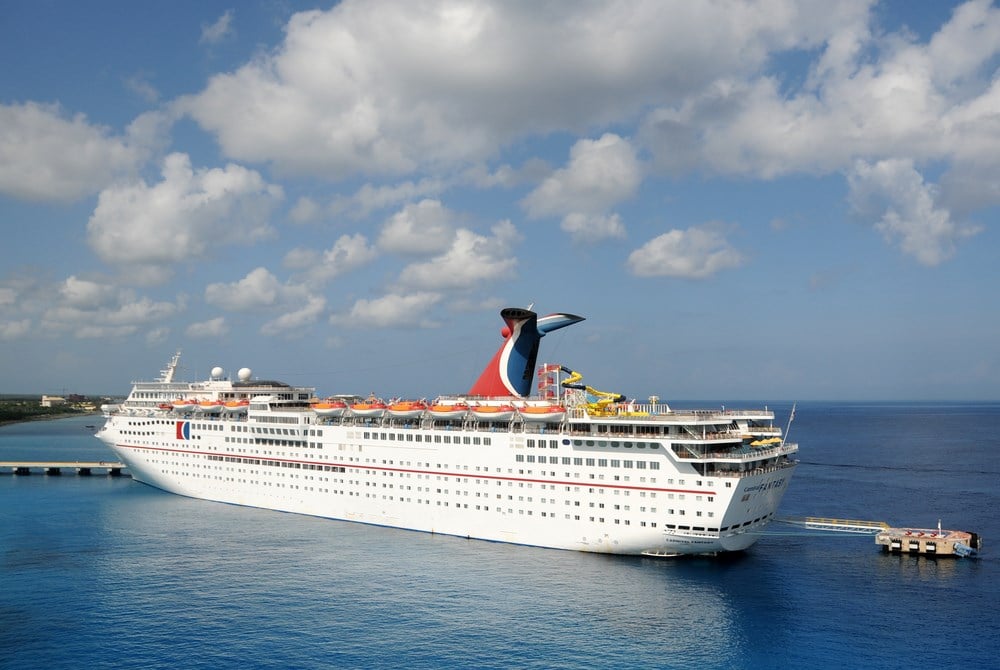
Carnival Corporation (NYSE: CCL) reported its second quarter 2023 earnings results at the market opening on Monday morning. Despite posting what seems to be optimistic financials and further expansion in the business drivers, the stock price action is reacting negatively, as it is reacting with an alarming 7.0% decline on the heels of the market opening.
After the stock rose by nearly 65% during the past twelve months, investors are hoping for another double since the all-time low price of $6.11 per share during 2022 has seen their excitement damper following today's sell-off.
Other operators in the space, who are all essentially competing on the number of eyeballs their similar services can command, may help investors paint a clearer picture of where the broader markets see Carnival heading. Names like Royal Caribbean Cruises (NYSE: RCL), who outperformed Carnival by as much as 90% during the past twelve months, and Norwegian Cruise Line Holdings (NYSE: NCLH), who performed almost in lock-step with Carnival during the year, may show important hints for investors to take home and make decisions accordingly.
After all, stocks follow underlying earnings and their respective expectations, starting with Carnival's financial results may improve the latest trend.
Disconnect Grandeur
Breaking down Carnival's quarterly earnings press release, it would become apparent, first and foremost, that the company beat analyst expectations for the net loss the company should have posted.
Analysts were expecting a net loss per share of $0.346. They received a satisfying surprise when management released a total loss per share of $0.31 per share. The narrower loss, acting as an 'earnings' beat, is driven by underlying tailwinds in the United States economy as well as the mechanics of the business riding on these tailwinds.
The earnings beat should have been enough to send the stock slightly higher, if not relatively flat, for the day starting at the market open. If that was not enough reason for a less volatile price action, investors could lean on Carnival's record second-quarter revenue of $4.9 billion.
Inflationary environments are easing as a result of the United States FED having raised interest rates during the better half of 2022; recession fears seem to have left the spotlight as well, considering that total bookings made during the quarter rose to new all-time highs for all future sailings.
As this figure represents the lifeblood of any business, free cash flow (cash flow from operations minus capital expenditures) for Carnival also rose to positive levels in the second quarter; management expectations for the remainder of 2023 also point to continued growth in free cash flow generation.
As free cash flow grows, management can choose where to allocate these funds best. The full-year 2023 outlook suggests that management will focus, as far as free cash flow is concerned, on paying down the company's debt levels. Investors can also hope for the continuation of free cash flow expansion, which can begin to trigger share repurchase program initiations, especially as the stock is considered relatively cheap today.
Relative Positioning
Carnival analyst ratings have come to a net downside consensus, pointing to a 12% due decline from today's prices. However, the top-side price target is set to a near 100% upside scenario from today's prices, which may become the new reality for Carnival stock.
The top-side mark of $32.0 per share represents a reasonable price level, which would fall at favorable Fibonacci retracements from COVID-19 sell-offs; markets need a fundamental reason to make these prices a reality. Perhaps a relative 'voting' system by the broader market can expedite this connection.
Carnival stock trades at a forward P/E ratio (next twelve months expected earnings) of 19.0x; this ratio does not say much about what markets are seeing or expecting. Comparing Carnival's close competitors like Royal Caribbean and Norwegian, which trade at lower ratios of 14.0x and 13.0x, respectively, the 'most popular' vote has set the stage for what investors can expect in the near future.
Some may argue that this dynamic only makes Carnival more 'expensive'; however, this can be seen as a broader market willingness to overpay for each dollar of the underlying business's current and future earnings.
Considering that Carnival's price-to-book value ratio, an alternative valuation measure in the absence of net income, has reached its all-time high, there is another piece to the directional puzzle of this stock. By assigning a 3.0x multiple, broader markets may expect an expansion in the underlying book value of the business. A vote of confidence can be implied in Carnival's ability to generate more free cash flow, enabling the debt pay downs suggested by management and ultimately increasing Carnival's book value. The stock carries many explosive catalysts, and it seems less like the sector's more 'expensive' alternative.





